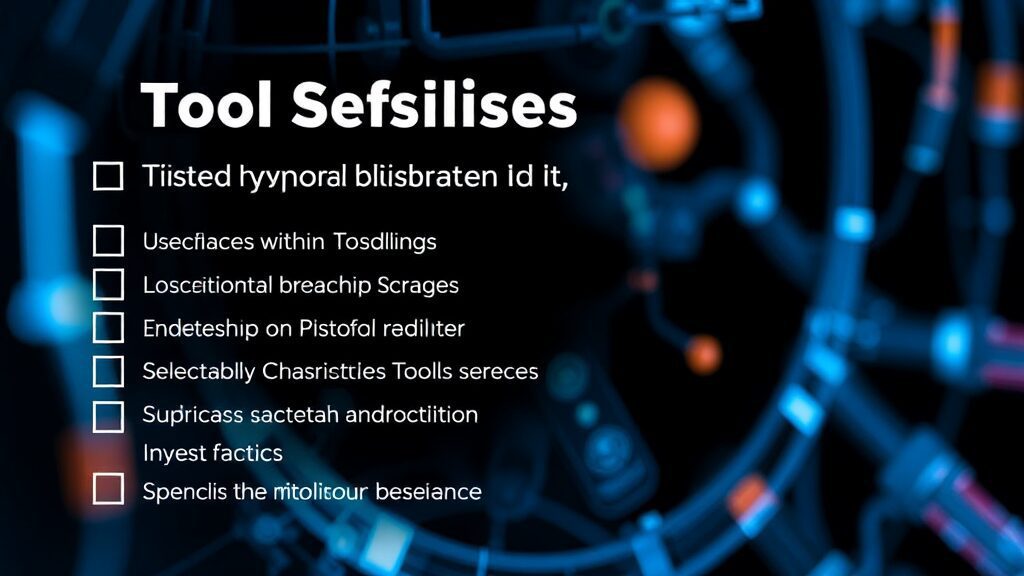
Defining Objectives and Use Cases
Identifying Key Factors
Clearly defining your objectives is crucial. Start by outlining specific problems to tackle and workflows to improve. Potential focuses include:
- Increasing efficiency
- Enhancing customer service
- Gaining a competitive edge
These objectives will align AI tools with your business goals. Next, identify the type of content you need, whether it’s text, images, or code. This clarity helps narrow down your choices, ensuring you select the most suitable AI solutions.
Consider the technical expertise of your users as well. Understanding their skill levels allows for a more precise match with the right tools, making implementation smoother and more effective.
Assessing AI Model Quality and Capabilities
Evaluating Performance
To determine the quality of an AI model, focus on a few critical aspects.
- Model Size: Larger models often exhibit superior performance, as they can capture more intricate patterns in data.
- Diversity of Training Data: A model trained on a variety of datasets tends to generalize better. This diversity ensures it can handle different scenarios effectively.
- Fine-Tuning Options: Look for models that allow fine-tuning. Customizing the model for specific domains can significantly enhance its performance for your unique needs.
Capabilities and Specialization
Consider how well the model supports various languages and if it has specialized applications.
- Multi-Language Support: Ensure the model can engage with multiple languages if necessary, expanding its usability.
- Specialized Models: For specific tasks like medical writing or creative storytelling, relying on models trained in those areas usually yields better results. Specialized models often understand nuances better and can produce more relevant outputs.
By keeping these factors in mind, you’re more equipped to select an AI tool that meets your specific requirements and expectations.
Evaluating User Interface and Ease of Use
An intuitive user interface plays a critical role in promoting user adoption and maximizing productivity. You want to consider how easy it is for non-technical users to navigate the tool. Factors to evaluate include:
Customization and Integration
Customization options can enhance user experience and allow for better integration into existing workflows. Look for tools that seamlessly connect with your current IT infrastructure and support cloud-based technologies such as AWS. This integration can streamline processes, reducing friction and time spent on tasks.
Mobile accessibility is another important aspect. Ensure that users can access the tool from their devices, making it easier to work on tasks from anywhere. This flexibility can significantly boost productivity, especially in hybrid work environments.
User Interface Design
An aesthetically pleasing and simple interface can lead to higher adoption rates. Users should feel comfortable and confident when using the tool. Key design elements to evaluate include:
- Clarity of menus and navigation
- Responsiveness and loading times
- Availability of help resources and tutorials
Selecting a tool with these features can lead to smoother implementation, enhanced collaboration, and overall better outcomes for you and your team.
Analyzing Cost Structure and Pricing Models
Evaluating Costs and Benefits
Assessing the cost structure of an AI tool is crucial for making an informed decision. Consider various factors when calculating expected ROI:
- Licensing Fees: These are often annual or monthly payments made to use the software. Understanding different licensing models—per user, based on usage, or flat fee—can help pinpoint the best option for your needs.
- Implementation Costs: These expenses include the integration of the AI tool into existing systems. Think about the resources needed for training employees and possible downtime during the switch.
- Maintenance Expenses: Ongoing costs for support, updates, and potential feature enhancements should factor into your budget.
While it might be tempting to opt for the lowest price, it’s essential to focus on the balance between cost and ROI. A cheaper tool may not deliver the value or functionality you require, leading to higher long-term costs. For example, investing in a slightly more expensive AI solution that offers superior support and capabilities can yield better results in productivity enhancements and cost savings over time.
Ultimately, ensuring the benefits outweigh the costs makes for a wiser investment in AI tools.
Ensuring Data Security and Privacy
Data Protection Regulations and Secure Practices
Ensuring compliance with data protection regulations is essential for AI tool selection. Look for features such as:
- Data encryption to safeguard information.
- Access controls that restrict unauthorized access.
- Regular security updates to address vulnerabilities.
These practices protect sensitive business data and build trust.
Addressing Ethical Considerations
Data security isn’t just about techniques; it’s also about ethics. AI outputs can reflect biases inherent in the training data. Be proactive in examining how an AI tool handles data privacy, ensuring it aligns with your ethical standards while promoting fairer outcomes.
Testing, Monitoring, and Long-Term Viability
Testing and Piloting
Conduct thorough tests and pilot programs to assess an AI tool’s performance and its impact on your business operations. This not only helps in evaluating effectiveness but also allows you to gather valuable user feedback that can inform necessary adjustments. Key steps include:
- Identify specific objectives for the pilot.
- Collect data on usage and performance metrics.
- Make iterative changes based on user input.
Continuous Monitoring and Innovation
Keep a close eye on the tool’s performance over time. Continuous monitoring helps in spotting any issues early and refining the system for optimal results. Stay updated on trends in AI to gauge the tool’s viability. Evaluate the financial health and innovation potential of the tool providers. This research ensures you’re partnering with companies that will continue to evolve and support your needs effectively.


